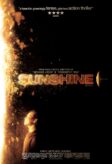Film Review: ANNIHILATION (2018): A Visually Arresting, Science-less Scifi Movie, & Secret Spoof Film
Annihilation Review
Annihilation (2018) Film Review, a movie directed Alex Garland, stars Natalie Portman, Oscar Isaac, Jennifer Jason Leigh, Tessa Thompson, Tuva Novotny, Gina Rodriguez, Benedict Wong, Cosmo Jarvis, Honey Holmes, David Gyasi, Bern Collaço, Kumud Pant, Ed Manner, Crystal Clarke, and John Schwab.
Annihilation is a visually stunning film that is scientifically and reality vapid in far too many ways for the film to be taken seriously or recommended. Almost all of the mistakes present in Alien: Covenant are present in Annihilation. The one saving grace in Alien: Covenant were the multiple scenes with androids, the best moments in the film. The best moments in Annihilation involve Natalie Portman’s acting, the film’s visuals, and some of the horror aspects of Annihilation. The container that those elements are in however, the narrative of Annihilation, is a Swiss cheese of inconsistencies and head-slapping, that-would-never-happen moments and situations.
Like in Alien: Covenant, the scientists in Annihilation walk into an alien environment, they don’t know how or what created it, what microbes are floating in the air, the only returnee’s body is riddled with cancer (that he didn’t have before entering Area X), and the scientists wear no helmets (or protective gear of any kind) to protect them from breathing in the native air? That would never happen in a million years in real life. It was a laughable, idiotic plot-point in Alien: Covenant and it is the same in Annihilation.
Here is how you know that this aspect of Annihilation is F.U.B.A.R.: there is a well-executed interrogation scene throughout Annihilation. Lena (Natalie Portman) is seated in a chair. The man in the room with her, unfortunately not John “Control” Rodriguez from the book series, is in a sealed bio-suit (the very suit that Portman and her team should have been wearing inside Area X). The room is air tight but even so, all the people on the outside of the glass walls of the room wear hospital masks over their noses and mouths.
Southern Reach personnel took those simple, intelligent, and proactive precautions to prevent exposure outside of the Area X border. Why didn’t the people going inside the Area X barrier take any of these same precautions to prevent air or viral exposure from the environment?
This complete lack of reality in Annihilation is confounding (especially in a film populated by scientists) and upon reflection, damages the positives that are present within Annihilation.
If Annihilation wanted the viewer to shut their brain off and look at explosions and pretty eye-candy, like in a Michael Bay-directed film, that is one thing. If that is the case, the helmet / bio-suit issue would not be a big deal. Director Alex Garland, on the other hand, wants the viewer to take the characters, the story, and the stakes involved completely seriously. Since that is the case, everything that they do and don’t do, by implication, should be taken seriously as well. How can the viewer take scientists seriously who don’t act like people of science?
Questions: Is Annihilation a secret, science-professional spoof film? Is Annihilation, in reality, a variant of 1984’s Ghostbusters?
These are the questions that occur to the viewer as they watch “scientists” enter Area X having taken no pro-active safety precautions.
Think of how good Annihilation, as a science-fiction film, would have been if reality had been in place (like in Sunshine): The scientists train for the expedition into Area X. There is a base camp with a sealed environment that the scientists, in bio-suits, have to trudge to in Area X. Instead, the viewer receives from Annihilation a rather sturdy and high-end episode of The Twilight Zone or Black Mirror, where one marvels at the machinations within its freshmen, first-draft, television script.
Annihilation successfully conjures a sense of unease the moment the film begins. That sense of unease ends in the third act of the film when Lena enters The Cave in The Lighthouse. The escalation in the film up to that point was excellent, especially with the exotic locales within Area X, the white alligator attack, the mimic bear attacks, and the discovery of the original Southern Reach border base.
As the four scientists traipse through the Area X environment in Annihilation, everything around them is a potential threat, thus adding to the constant aura of danger, since they know next to nothing about the mutations and examples of cross-genetic material splicing they are encountering.
The deeper the four expedition members venture into Area X, the deeper that fear of the unknown becomes for certain expedition members (and the viewer), some not wanting to believe what they are witnessing. Fear of the unknown is a wonderful tool in film. It is one of the few aspects of Annihilation that is executed with an acute eye.
The animal attacks are the highlight of Annihilation but it is the mimic bear attacks that are the standouts. The second mimic bear attack took everything that had happened up to that point in the film (foreboding tone, anxiety, fear, gore, and dread), combined, and amplified them. The attack and the circumstances surrounding it are terrifying, the specter monstrous, the scene very much like the alien / tied-to-a-chair / testing scene in John Carpenter‘s The Thing. I made the stakes in Annihilation that much higher and than it was thrown away as the film finally got its remaining characters to The Lighthouse.
Once Lena walks inside The Lighthouse, most-if-not-all of the positive aspects of Annihilation end. Even-though something pivotal is discovered and something consequential happens inside of The Lighthouse, it pales in comparison to what happens before The Lighthouse in Annihilation. And the unfortunate reality of the three act narrative of Annihilation – The Lighthouse is designed to be the crescendo of the film, the seminal event that defines (or redefines) it.
That redefining does occur but not in a rewarding way. It is an unexciting reveal, bland.
At the end of Annihilation, the only two people that mysteriously survived their ordeal within Area X are allowed into the same room together. In a real, scientific situation, in a real lab operated by real scientists, this would never be allowed to happen. Southern Reach doesn’t know if what came back out of Area X is in fact Kane and if Lena is the real Lena. By Southern Reach’s own analysis, Lena only had a few weeks worth of food, she survived for nearly three times that amount of time, and they can’t explain how she did it. Annihilation wants the viewer to believe that Southern Reach scientists can’t explain how a human being could survive for that long without food and water, that they say oh-what-the-hell, let Lena out of isolation, and allow her to have physical contact with the only other being that has returned (or was released) from Area X? That would never happen. There is zero logic behind it. My jaw figuratively dropped when I saw the Lena clone freely walking into Kane (Oscar Isaac)’s hospital / observation room. How do the scientists know or not know if they were inadvertently mixing two biologically hazardous elements (Lena and Kane) together e.g two halves of a intergalactic monster, the two ingredients of an alien, world-ending explosive, etc.? The Southern Reach scientists have no way of knowing yet they freely take such a monumental risk? Like the crystal trees in Annihilation‘s third act, Annihilation crashes to the ground and shatters when this unbelievable event takes place. It is a terrible, unrealistic ending to an “OK” science (AHAAHAHA! What science?)-fiction (extremely fictional) film.
On closer analysis, it is the perfect and fitting ending to Annihilation. An immensely silly, faux scifi movie deserves a non-credible ending that baffles the mind.
Rating: 3/10
Leave your thoughts on this Annihilation review and the film below in the comments section. Readers seeking more film reviews can visit our Movie Review Page, our Movie Review Facebook Page, and our Movie Review Google+ Page. Want up-to-the-minute notifications? FilmBook staff members publish articles by Email, Twitter, Tumblr, Google+, and Facebook.
Related Articles
FilmBook's Newsletter
Subscribe to FilmBook’s Daily Newsletter for the latest news!













